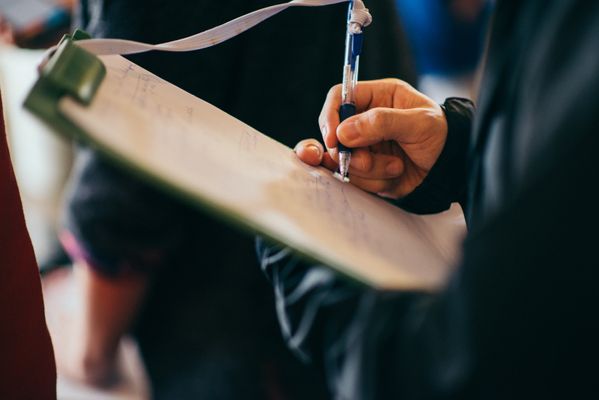7.1.5
Specifications
Design Brief and Specification
Design Brief and Specification
A design brief informs you what it is you need to design. It should be clear and simple.


Design brief
Design brief
- You are required to write a design brief and specification as part of your NEA.
- For example:
- Design and make a children's toy inspired by space.
- The product will need to be eye catching, safe and educational.


Changing the brief
Changing the brief
- Design briefs and specifications can change throughout your project.
- Your brief will change as you conduct more research.
- You may change the brief after modelling and testing your idea.
- You may also change the brief following client feedback.
Manufacturing Specification
Manufacturing Specification
You will need to write a manufacturing specification that will list what your product MUST do and COULD do. By doing a range of research and speaking with your client you will be able to write the manufacturing specification.


Manufacturing specification
Manufacturing specification
- You will need to write a manufacturing specification that will list what your product MUST do and COULD do.
- By doing a range of research and speaking with your client you will be able to write the manufacturing specification.


Design solutions
Design solutions
- This may change as you develop your design solution but it is a list to help you design and model your idea.
- Categories to consider in your specification...
- (Ensure they are MEASURABLE and SPECIFIC.)


Categories to consider
Categories to consider
- Aesthetics.
- Customer.
- Cost.
- Environment.
- Safety.
- Size.
- Function.
- Materials.
1Core Technical Principles
1.1New & Emerging Technologies
1.2Energy Generation & Storage
1.3Developments in New Materials
1.4Systems Approach to Designing
1.5Mechanical Devices
1.6Materials Categories
2Paper & Board: Specialist Technical Principles
2.1Selection of Materials
2.2Paper & Board: Forces & Stresses
2.3Paper & Board: Ecological & Social Footprint
2.4Paper & Board: Sources & Origins
2.5Paper & Board: Using Materials
2.6Paper & Board: Stock Forms, Types & Sizes
2.7Paper & Board: Scales of Production
2.8Paper & Board: Specialist Techniques & Processes
2.9Paper & Board: Surface Treatments & Finishes
3Timber: Specialist Technical Principles
3.1Timber: Selection of Materials
3.2Timber: Forces & Stresses
3.3Timber: Ecological & Social Footprint
3.4Timber: Sources & Origins
3.5Timber: Using Materials
3.6Timber: Stock Forms, Types & Sizes
3.7Timber: Scales of Production
3.8Timber: Specialist Techniques & Processes
3.9Timber: Surface Treatments & Finishes
4Metal: Specialist Technical Principles
4.1Metals: Selection of Materials
4.2Metals: Forces & Stresses
4.3Metals: Ecological & Social Footprint
4.4Metals: Sources & Origins
4.5Metals: Alloy-Based Materials
4.6Metals: Using Materials
4.7Metals: Scales of Production
4.8Metals: Specialist Techniques & Processes
4.9Metals: Quality Control
4.10Metals: Surface Treatments & Finishes
5Polymers: Specialist Technical Principles
5.1Polymers
5.2Polymer Categories
5.3Polymer Forms
5.4Polymer Production, Techniques & Quality Control
6Textiles: Specialist Technical Principles
6.1Textile Materials
6.2Selection of Materials
6.3Forces & Stresses
7Designing & Making Principles
7.1Investigation & Data
7.2Environmental, Social & Economic Challenges
7.3The Work of Others
7.4Design Strategies
7.5Communication of Design Ideas
7.6Prototype Development
7.7Selection of Materials
7.8Tolerances
7.9Material Management
7.10Specialist Equipment
7.11Specialist Techniques & Processes
Jump to other topics
1Core Technical Principles
1.1New & Emerging Technologies
1.2Energy Generation & Storage
1.3Developments in New Materials
1.4Systems Approach to Designing
1.5Mechanical Devices
1.6Materials Categories
2Paper & Board: Specialist Technical Principles
2.1Selection of Materials
2.2Paper & Board: Forces & Stresses
2.3Paper & Board: Ecological & Social Footprint
2.4Paper & Board: Sources & Origins
2.5Paper & Board: Using Materials
2.6Paper & Board: Stock Forms, Types & Sizes
2.7Paper & Board: Scales of Production
2.8Paper & Board: Specialist Techniques & Processes
2.9Paper & Board: Surface Treatments & Finishes
3Timber: Specialist Technical Principles
3.1Timber: Selection of Materials
3.2Timber: Forces & Stresses
3.3Timber: Ecological & Social Footprint
3.4Timber: Sources & Origins
3.5Timber: Using Materials
3.6Timber: Stock Forms, Types & Sizes
3.7Timber: Scales of Production
3.8Timber: Specialist Techniques & Processes
3.9Timber: Surface Treatments & Finishes
4Metal: Specialist Technical Principles
4.1Metals: Selection of Materials
4.2Metals: Forces & Stresses
4.3Metals: Ecological & Social Footprint
4.4Metals: Sources & Origins
4.5Metals: Alloy-Based Materials
4.6Metals: Using Materials
4.7Metals: Scales of Production
4.8Metals: Specialist Techniques & Processes
4.9Metals: Quality Control
4.10Metals: Surface Treatments & Finishes
5Polymers: Specialist Technical Principles
5.1Polymers
5.2Polymer Categories
5.3Polymer Forms
5.4Polymer Production, Techniques & Quality Control
6Textiles: Specialist Technical Principles
6.1Textile Materials
6.2Selection of Materials
6.3Forces & Stresses
7Designing & Making Principles
7.1Investigation & Data
7.2Environmental, Social & Economic Challenges
7.3The Work of Others
7.4Design Strategies
7.5Communication of Design Ideas
7.6Prototype Development
7.7Selection of Materials
7.8Tolerances
7.9Material Management
7.10Specialist Equipment
7.11Specialist Techniques & Processes
Unlock your full potential with Seneca Premium
Unlimited access to 10,000+ open-ended exam questions
Mini-mock exams based on your study history
Unlock 800+ premium courses & e-books